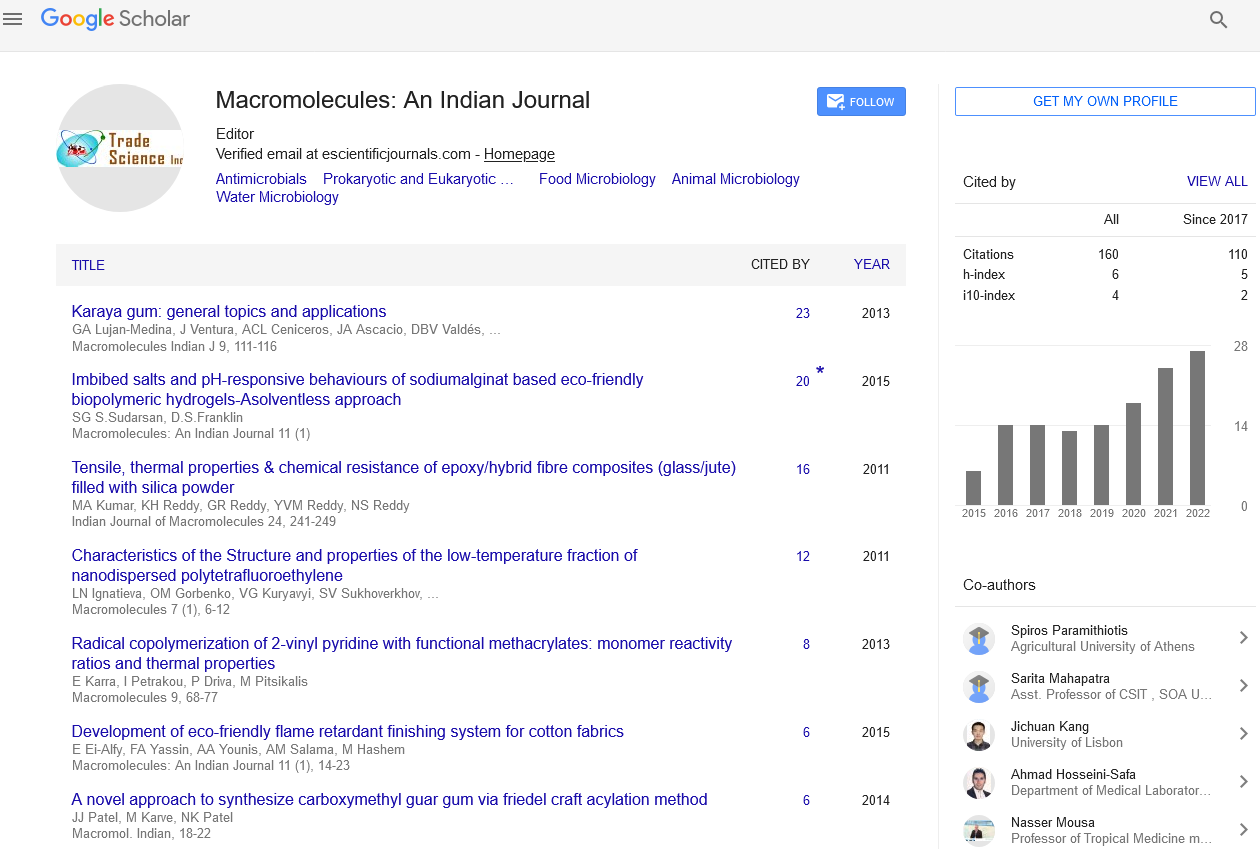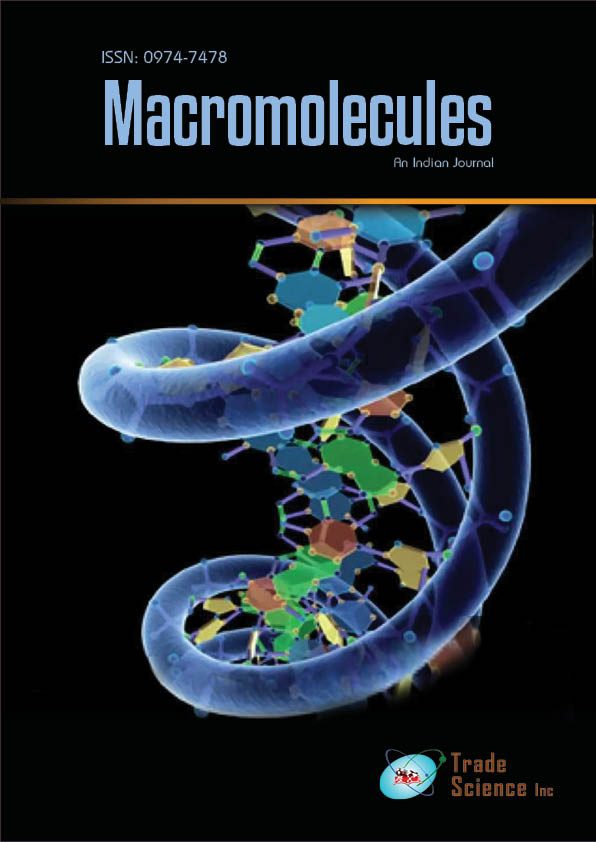Abstract
Mechanical, thermal and morphological analysis of EPDM/ polypropylene coconutpith composites
Author(s): V.K.Abitha, K.RajkumarIncreasing concern about global warming and depleting petroleumreserves have made scientists to focus more on the use of natural fibers such as bagasse, coir, sisal, jute etc. This has resulted in creation of more awareness about the use of natural fibers based materials mainly composites. Ecofriendly coconut pith fillers are used as cost effective filler in many of the rubber based composites. The advantages of coconut pith over traditional reinforcing materials such as glass fibers, talc, and mica are acceptable specific strength properties, lowcost, lowdensity, non abrasivity, good thermal properties, enhanced energy recovery and biodegradability, and recyclable in nature.Among various natural fibers, both coir and jute fibers are widely available cheap, relatively water – proof and is resistant to damage by salt water. Coconut piths have an outstanding potential as reinforcement in thermoplastics. Commonly used thermoplastics are Polyethylene, Polypropylene, Polystyrene, Nylon etc. These composites are used in automotive components, buildingmaterials. EPDM/Polypropylene blends and composites are the most commonly used ones in the thermoplastic elastomers (TPE) in industry. In this current studymorphology, thermal behaviour mechanical properties of EPDM/ Polypropylene coconut pith composites have been investigated. Coconut pith in different ratioswas added into EPDM/ Polyproylene thermoplastics vulcanizates using Brabender Plastic order.

